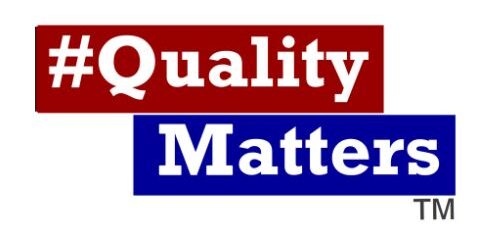Podcast: Play in new window | Download (Duration: 30:57 — 28.3MB) | Embed
Subscribe: Apple Podcasts | Spotify | TuneIn | RSS | More
Understanding the Climate Change Amendment in ISO 9001
In Episode 216 of #QualityMatters, we explore the climate change amendment, a concise yet impactful update to ISO 9001 that compels organizations to identify and address climate-related risks within their quality management systems. This climate change amendment—just two lines of text—requires companies to determine whether climate change is an issue and to integrate relevant controls into their existing processes.
Why ISO 9001 Amendment Matters Now
ISO 9001 has long embraced risk-based thinking, but until recently, “environmental” considerations focused on product conformity and resource usage. The new ISO 9001 amendment explicitly brings climate risk into scope, aligning quality management with global sustainability goals. By articulating climate change as an “interested party” requirement, the amendment extends the standard’s reach into environmental stewardship without creating a separate ISO document.
Exact Wording of the Two-Line Update
The amendment reads:
- The organization shall determine whether climate change is an issue that can affect its quality management system.
- Where such issues are identified, the organization shall plan and implement actions to address these climate-related risks and opportunities.
Though minimal, this language integrates seamlessly into Clauses 4 and 6 of ISO 9001:2015, reinforcing the risk-based framework and ensuring that climate considerations become an embedded part of continual improvement.
Practical Interpretation: Determining Climate-Related Risks
“Determine whether climate change is an issue” may sound broad, but organizations can ground this in real-world examples. For instance:
- Manufacturers assess supply-chain vulnerabilities due to extreme weather events.
- Service providers evaluate energy-use efficiency and carbon footprint in daily operations.
- Agricultural operations might switch from diesel-based to biofuel-based equipment or adopt no-till practices to reduce greenhouse gas emissions.
By mapping these risks in a dedicated section of the risk register, companies demonstrate compliance with the climate change amendment and strengthen overall process resilience.
IAF Guidance: What Auditors Need to Know
Shortly after publication, the International Accreditation Forum (IAF guidance) issued a complementary document outlining how auditors should verify compliance:
- Evidence gathering: Auditors must review documented risk assessments and climate-related action plans.
- Scope expansion: Interviews with process owners should probe climate mitigation measures alongside traditional quality controls.
- Audit time allocation: Expect an additional 30–60 minutes to cover climate topics thoroughly.
This IAF guidance ensures consistent treatment across certification bodies, preventing arbitrary interpretations and audit surprises.
Adapting Your Audit Planning
Incorporating the amendment into audit planning involves:
- Pre-audit review of climate-risk registers and related meeting minutes.
- Schedule adjustment to include climate-specific interviews and process walk-throughs.
- Auditor training on environmental metrics and carbon accounting fundamentals.
Organizations should update their audit checklists and risk-based audit plans to reflect these changes, ensuring no climate-related requirement is overlooked.
How Certification Bodies Are Responding
Different certification bodies have nuanced approaches:
- European bodies often deploy detailed “climate maturity” questionnaires.
- North American bodies tend to integrate climate questions into existing risk modules.
Regardless of format, all audit reports must clearly note climate-risk identification and associated controls, with nonconformities raised where evidence is insufficient.
Recommendations for Organizations
To get ahead of the climate change amendment and streamline future audits:
- Revise your risk register: Create a standalone section for climate risks and opportunities.
- Develop action plans: Link each identified risk to specific controls—energy efficiency projects, supply-chain audits, or supplier sustainability clauses.
- Train internal teams: Host workshops on IAF guidance so that both auditors and process owners speak a common language.
- Document thoroughly: Store climate-risk assessments, meeting minutes, and control records in your QMS platform for easy retrieval.
Looking Ahead: Beyond Two Lines of Text
While the amendment itself is brief, its implications span procurement, production, and strategic planning. Embedding climate considerations today not only satisfies the ISO 9001 amendment but also positions organizations to meet evolving stakeholder expectations around sustainability and corporate responsibility.
